This Remote Arizona Canyon Village Might Be The Most Surreal Place In The State
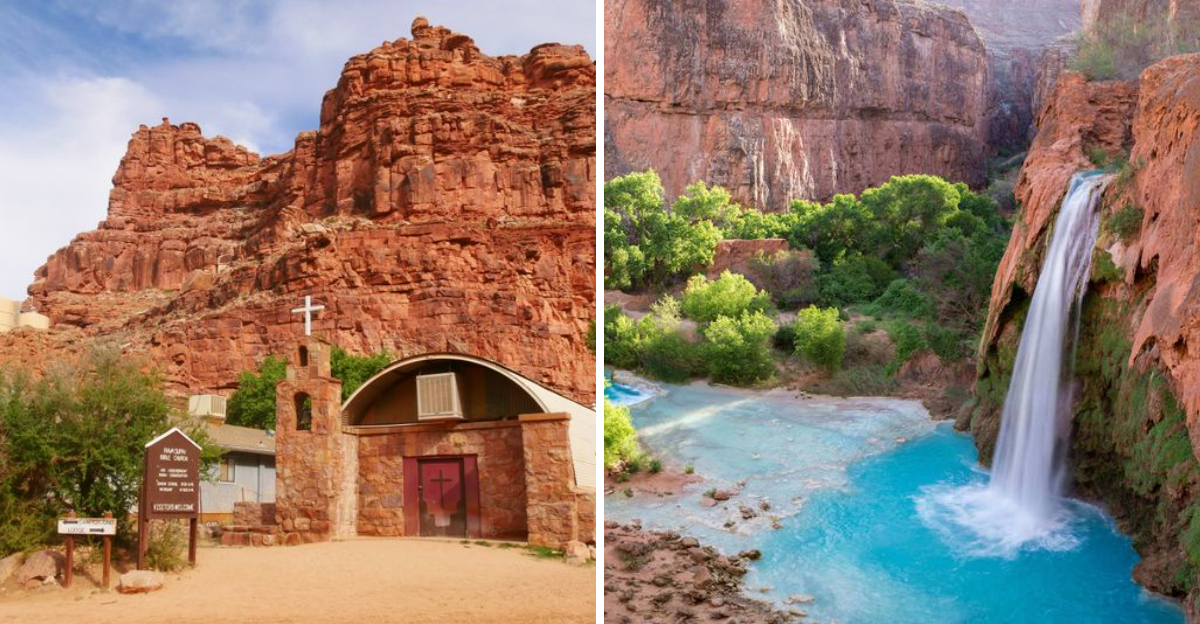
I’ve hiked to some pretty wild places in Arizona, but nothing quite prepared me for Supai Village. Tucked eight miles below the Grand Canyon’s rim, this tiny Havasupai community feels like stepping into another dimension.
The turquoise waterfalls, the mail-by-mule system, and the star-soaked nights make it unlike anywhere else I’ve ever been.
The Only Place In America Where Mail Still Arrives By Mule

Forget Amazon Prime. In Supai, your letters and packages arrive on four hooves and a stubborn attitude. The postal service here relies entirely on mules to haul mail down that brutal eight-mile trail, making it the last place in America where this happens.
I watched the mule train arrive one morning, laden with everything from birthday cards to camping gear. It’s oddly charming and completely necessary since no roads reach this village.
Even the internet can’t replace the reliability of these sure-footed delivery animals navigating switchbacks and rocky paths daily.
A Village Hidden Eight Miles Below The Rim Of The Grand Canyon

Getting to Supai means committing to a serious hike or a helicopter ride that costs more than most plane tickets. The village sits in Havasu Canyon, a side branch of the Grand Canyon, surrounded by towering red walls that seem to swallow the sky.
Only about 450 Havasupai tribal members call this place home year-round. I felt the isolation immediately—no cell service, no road access, just canyon walls and the sound of water.
It’s remote in a way that makes you rethink what civilization actually needs.
Turquoise Waters That Look Almost Too Vivid To Be Real
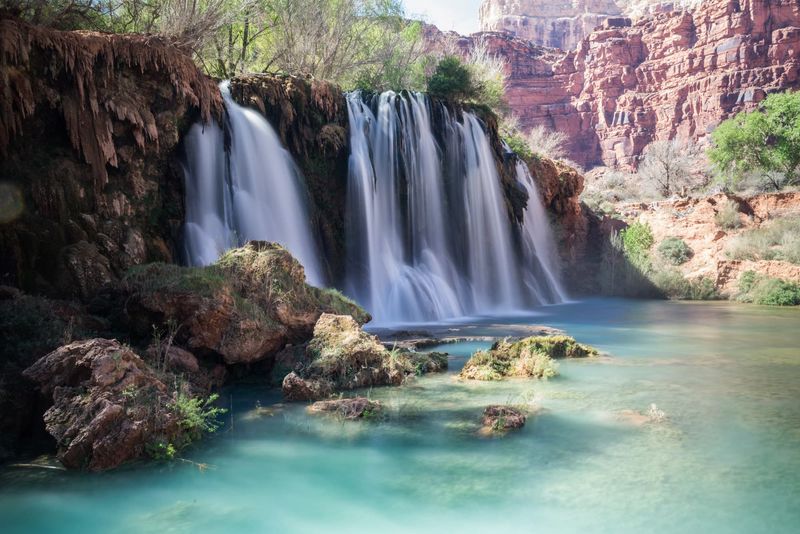
When I first saw Havasu Creek, I thought someone had dumped food coloring into it. The water glows this unreal shade of blue-green that photographs can’t quite capture accurately.
The color comes from calcium carbonate and magnesium in the water, which reflects light in this surreal way. It’s the same stuff that builds the travertine formations around the waterfalls.
Standing knee-deep in that electric blue current felt like being inside a screensaver. Nature really went all out with the color palette here, and I’m not complaining one bit.
Home To The Havasupai Tribe For Centuries
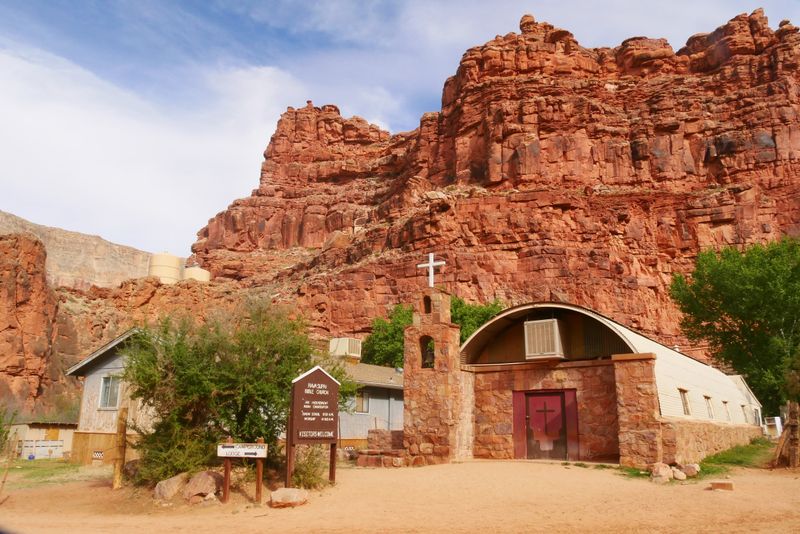
The Havasupai people have lived in this canyon for at least 800 years, possibly longer. Their name literally means “people of the blue-green water,” which makes perfect sense once you see the place.
I learned that they once farmed the canyon floor, growing corn, beans, and squash in the fertile soil. The tribe still maintains deep connections to this land despite centuries of outside pressure and forced relocations.
Visiting here means respecting their home and following their rules—this isn’t just a tourist attraction, it’s someone’s ancestral homeland.
Havasu Falls: The Iconic Desert Waterfall That Defines The Canyon
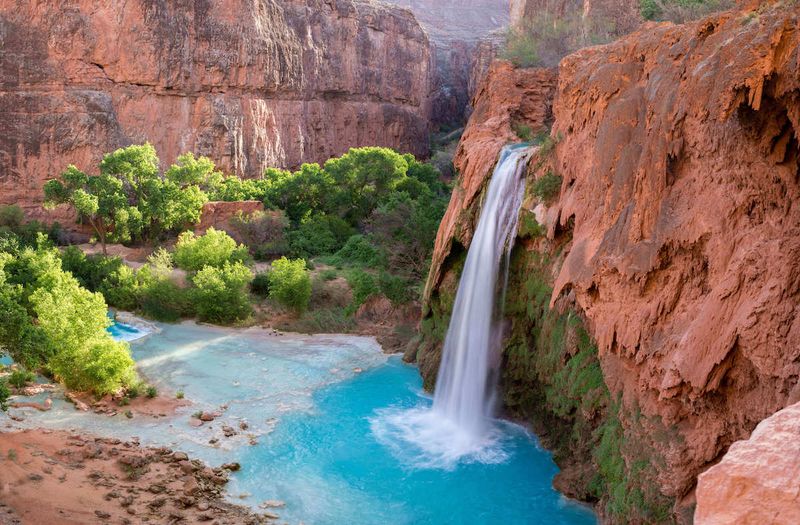
This is the waterfall that launched a thousand Instagram accounts. Havasu Falls drops about 100 feet into a pool so blue it looks photoshopped, surrounded by red rock and greenery that shouldn’t exist in the desert.
I arrived at sunrise when the light hit the mist just right, creating rainbows that danced across the spray. The roar of the water echoed off the Arizona canyon walls, drowning out every other thought in my head.
It’s crowded during peak season, but honestly, I understood why everyone makes the pilgrimage here.
Mooney Falls: A 200-Foot Drop Reached By Chains, Caves, And Ladders
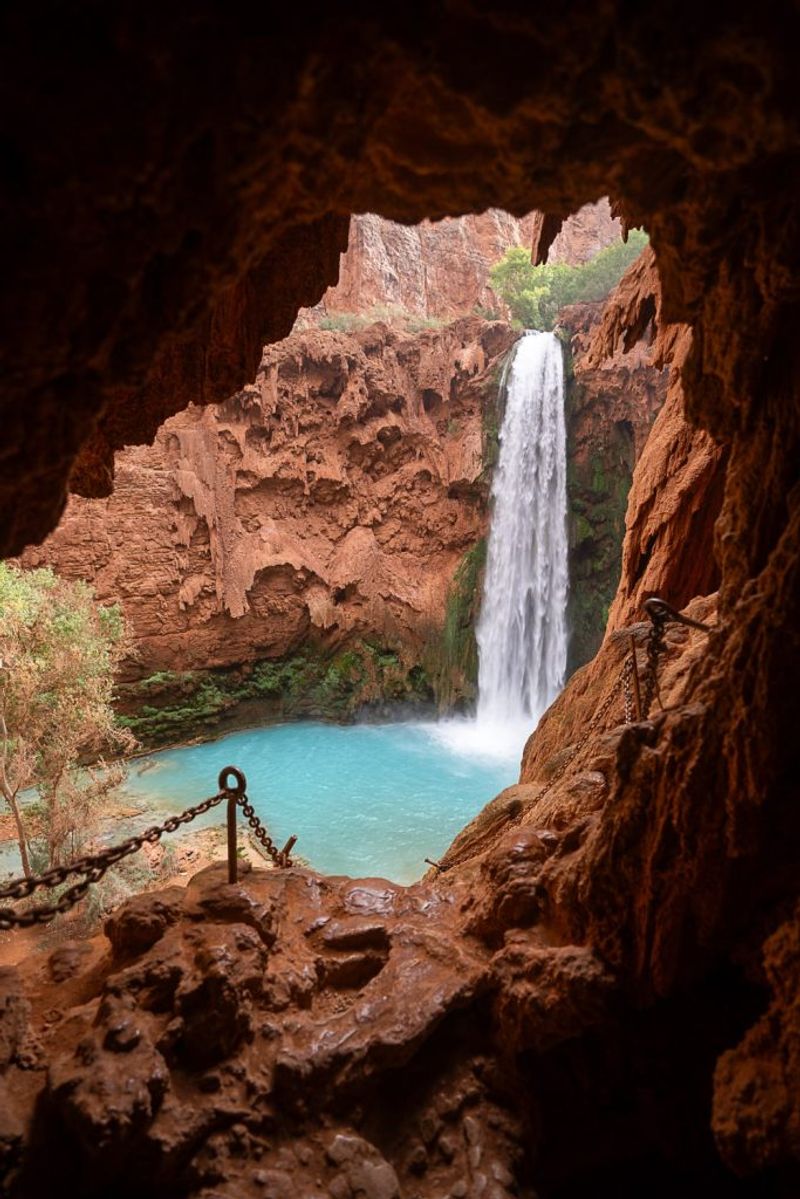
If Havasu Falls is the pretty postcard, Mooney Falls is the adventure that makes you question your life choices. Getting down to the base requires climbing through tunnels carved into the cliff and descending slippery chains bolted to the rock face.
I won’t lie—my hands were shaking the entire way down. But that 200-foot curtain of water crashing into the pool below was worth every terrifying moment.
Named after a prospector who fell to his death here, it’s both beautiful and a little haunting.
Beaver Falls And The Travertine Terraces Downstream

Past Mooney Falls, this Arizona canyon opens up into a series of smaller cascades and pools that look like nature’s own infinity pool design. Beaver Falls isn’t one waterfall but several, tumbling over travertine shelves into pools perfect for swimming.
I spent an entire afternoon hopping between pools, each one a different shade of blue. The travertine formations create these natural dams that constantly reshape the landscape.
Fewer people make it this far downstream, so it feels more peaceful and less like a crowded swimming hole.
A Landscape Sculpted By Floods, Carving New Pools And Waterfalls
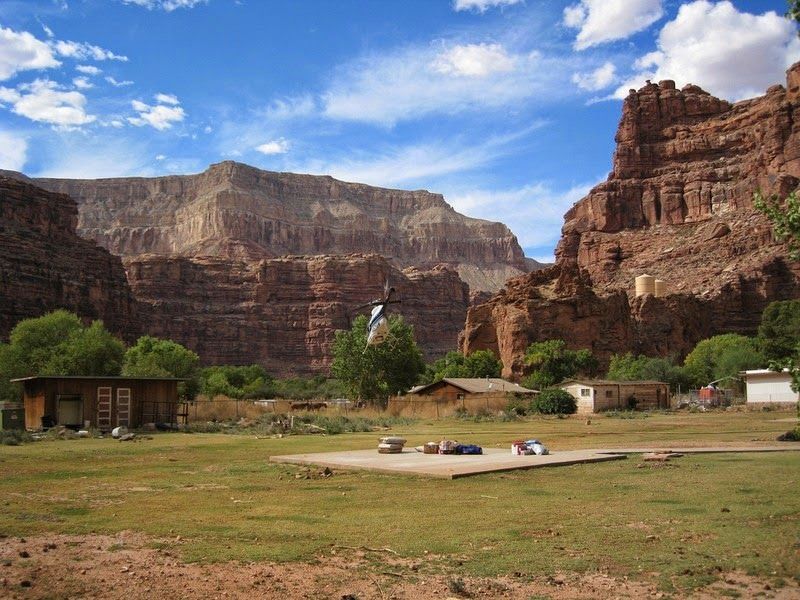
Flash floods regularly rewrite the geography here, sometimes overnight. In 2008, a massive flood completely rearranged Navajo Falls and created new cascades that didn’t exist before.
I found it fascinating and a little unsettling that the landscape I was hiking through could look totally different next year. The travertine builds up, breaks down, and reforms in an endless cycle of creation and destruction.
It’s a reminder that even places that feel permanent are constantly changing, shaped by water’s patient but powerful hand.
